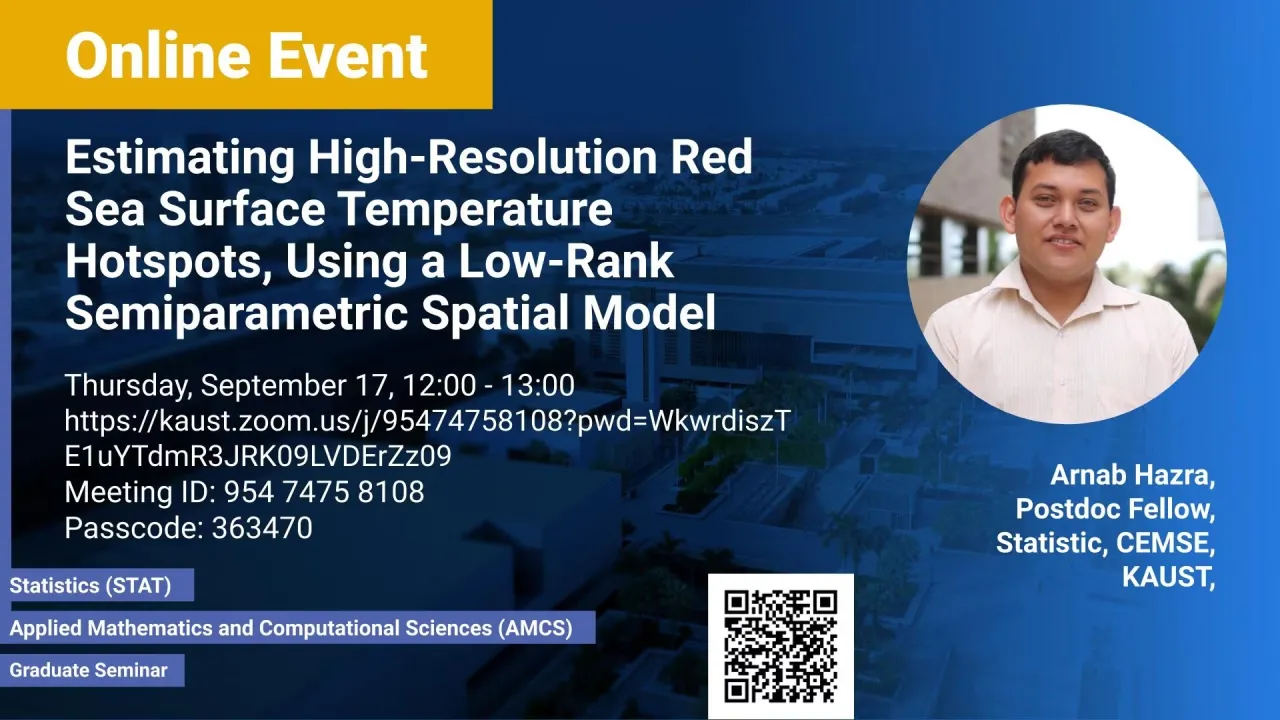
Estimating High-Resolution Red Sea Surface Temperature Hotspots, Using a Low-Rank Semiparametric Spatial Model
In this work, we estimate extreme sea surface temperature (SST) hotspots, i.e., high threshold exceedance regions, for the Red Sea, a vital region of high biodiversity. We analyze high-resolution satellite-derived SST data comprising daily measurements at 16703 grid cells across the Red Sea over the period 1985–2015. We propose a semiparametric Bayesian spatial mixed-effects linear model with a flexible mean structure to capture spatially-varying trend and seasonality, while the residual spatial variability is modeled through a Dirichlet process mixture (DPM) of low-rank spatial Student-t processes (LTPs). By specifying cluster-specific parameters for each LTP mixture component, the bulk of the SST residuals influence tail inference and hotspot estimation only moderately. Our proposed model has a nonstationary mean, covariance and tail dependence, and posterior inference can be drawn efficiently through Gibbs sampling. In our application, we show that the proposed method outperforms some natural parametric and semiparametric alternatives.
Overview
Abstract
In this work, we estimate extreme sea surface temperature (SST) hotspots, i.e., high threshold exceedance regions, for the Red Sea, a vital region of high biodiversity. We analyze high-resolution satellite-derived SST data comprising daily measurements at 16703 grid cells across the Red Sea over the period 1985–2015. We propose a semiparametric Bayesian spatial mixed-effects linear model with a flexible mean structure to capture spatially-varying trend and seasonality, while the residual spatial variability is modeled through a Dirichlet process mixture (DPM) of low-rank spatial Student-t processes (LTPs). By specifying cluster-specific parameters for each LTP mixture component, the bulk of the SST residuals influence tail inference and hotspot estimation only moderately. Our proposed model has a nonstationary mean, covariance and tail dependence, and posterior inference can be drawn efficiently through Gibbs sampling. In our application, we show that the proposed method outperforms some natural parametric and semiparametric alternatives. Moreover, we show how hotspots can be identified and we estimate extreme SST hotspots for the whole Red Sea, projected until the year 2100, based on the Representative Concentration Pathway 4.5 and 8.5. The estimated 95% credible region for joint high threshold exceedances include large areas covering major coral reefs in the southern Red Sea.
Brief Biography
Arnab Hazra obtained his Bachelor of Statistics and Master of Statistics from Indian Statistical Institute, Kolkata, India and PhD in Statistics from North Carolina State University, Raleigh, United States. Subsequently, he joined the ExtStat research group, KAUST, led by Prof. Raphael Huser, as a postdoctoral fellow.

